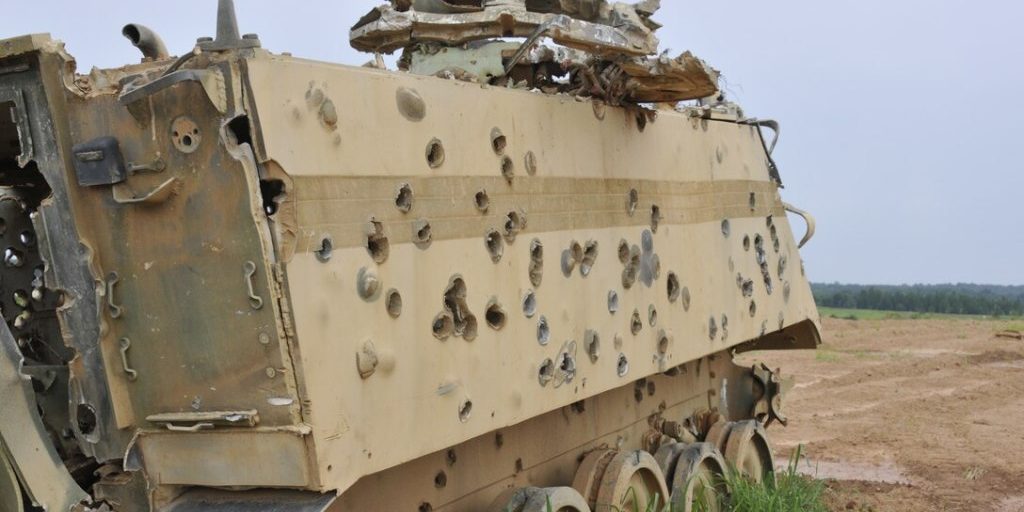Presently, modern APCs are required to provide protection against heavy machine gun projectiles, rocket-propelled grenades, landmines, and improvised explosive devices. To accomplish this, APCs use modular armor, active protection, vehicle height, blast-attenuating seats, and structures to ensure protecting its contents. DSIAC was asked to summarize recent research pertaining to APC survivability. A DSIAC subject matter expert assembled a survey of armor materials and armor types (steel, aluminum, ceramics, spall liners, and appliques) for APC survivability, as well as a brief discussion of seat and floor designs and APC tires.
Armored Personnel Carrier (APC) Survivability

A US M-113 Armored Personnel Carrier sits at 188th Wing Detachment 1 Razorback Range at Fort Chaffee Maneuver Training Center, Arkansas (U.S. Air National Guard photo by Staff Sgt. John Suleski/released).
Posted on January 4, 2021 | Completed on December 7, 2020 | By: Ted Chiesa
What recent work has been done in armored personnel carrier (APC) survivability?
Want to find out more about this topic?
Request a FREE Technical Inquiry!

